This is my first oscillator circuit using a vacuum tube, and my first VTTC (vacuum tube tesla coil).
I was surprised to get some good results from the first try, a good encouragement for higher power setups using GU-81M or GMI-90, which I also have. Funny I learned to use vacuum tubes after first learning about microcontrollers.
I opted for the GI-30 because it’s a medium power tetrode, and I wanted a compact design (storage space is currently a problem). So I ended up with a nice and compact setup, that works off-line, directly at 220V, with only a voltage doubler to get the plate voltage up to 560V DC.
The circuit diagram, is a classic:
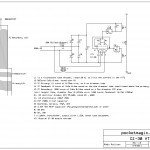
I don’t need to go into details explaining this circuit, it is a simple Armstrong oscillator, using the feedback coil L4. Here is a great tutorial detailing all the basic knowledge and know-hows behind a VTTC.
First tests and construction pictures:
My goal was a compact design. I’ve used a 220V ATX PC Supply connector, a switch to power the tube, and another one to select the filament voltage (under-nominal and the nominal 12.6V values). Careful, the voltage must be 12.6V with the tube connected!
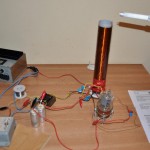 |
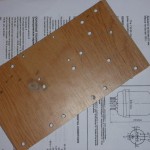 |
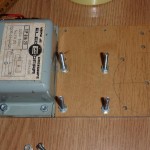 |
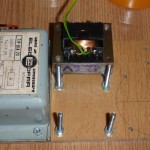 |
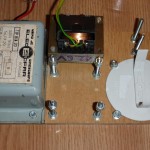 |
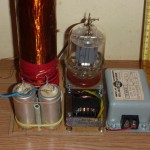 |
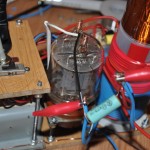 |
 |
I then tried various combination of secondaries and primaries coils, with variable number of turns or coil diameter, and adjusted the capacitors to get the best spark, RF emission, and power level. This took some time, but it was an important step in the construction of this VTTC:
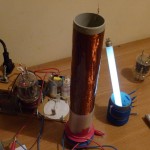 |
 |
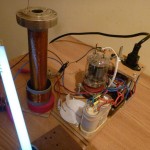 |
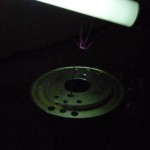 |
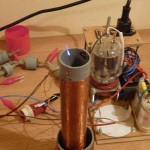 |
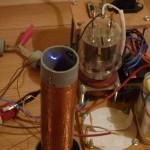 |
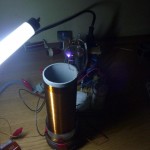 |
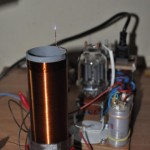 |
It can be seen the last coil is a winner. Also it is more compact than the other 2, perfect for my setup. I had to wind it manually and this also took time, but at least I could use it successfully.
Final setup
For the final setup I had to move the electrolytic capacitors, and cover them with another piece of wood to make some space for the coil and oscillator and feedback caps, on the same base. Got this nicely done:
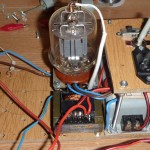 |
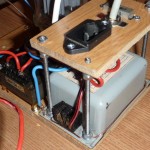 |
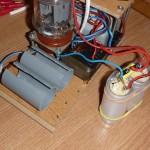 |
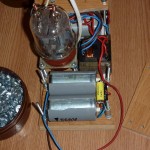 |
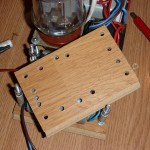 |
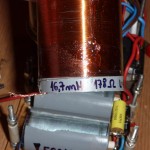 |
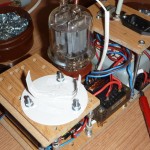 |
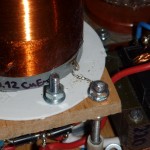 |
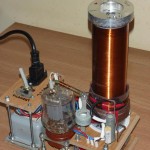 |
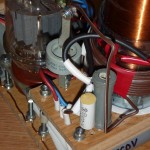 |
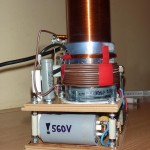 |
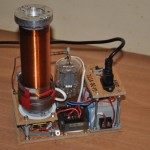 |
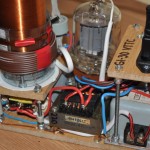 |
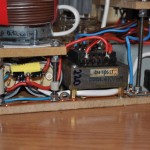 |
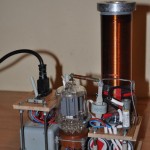 |
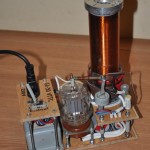 |
I decided to drop the topload, and I adjusted the number of primary turns to 21 to achieve the best spark length.
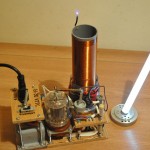 |
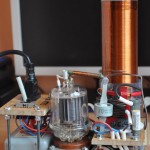 |
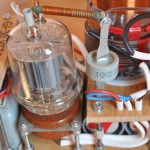 |
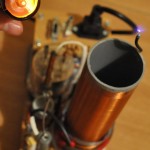 |
The last picture shows a very rare, neon filled tube, the JAN-CW-313CD , being lit by the RF field of the VTTC.
Here is the datasheet for the GI-30: GI30

is your vttc tuned?
yes
sweet
http://www.adevarul.ro/locale/timisoara/Istoria-Romania-Doilea-Razboi-Mondial_0_559144790.html